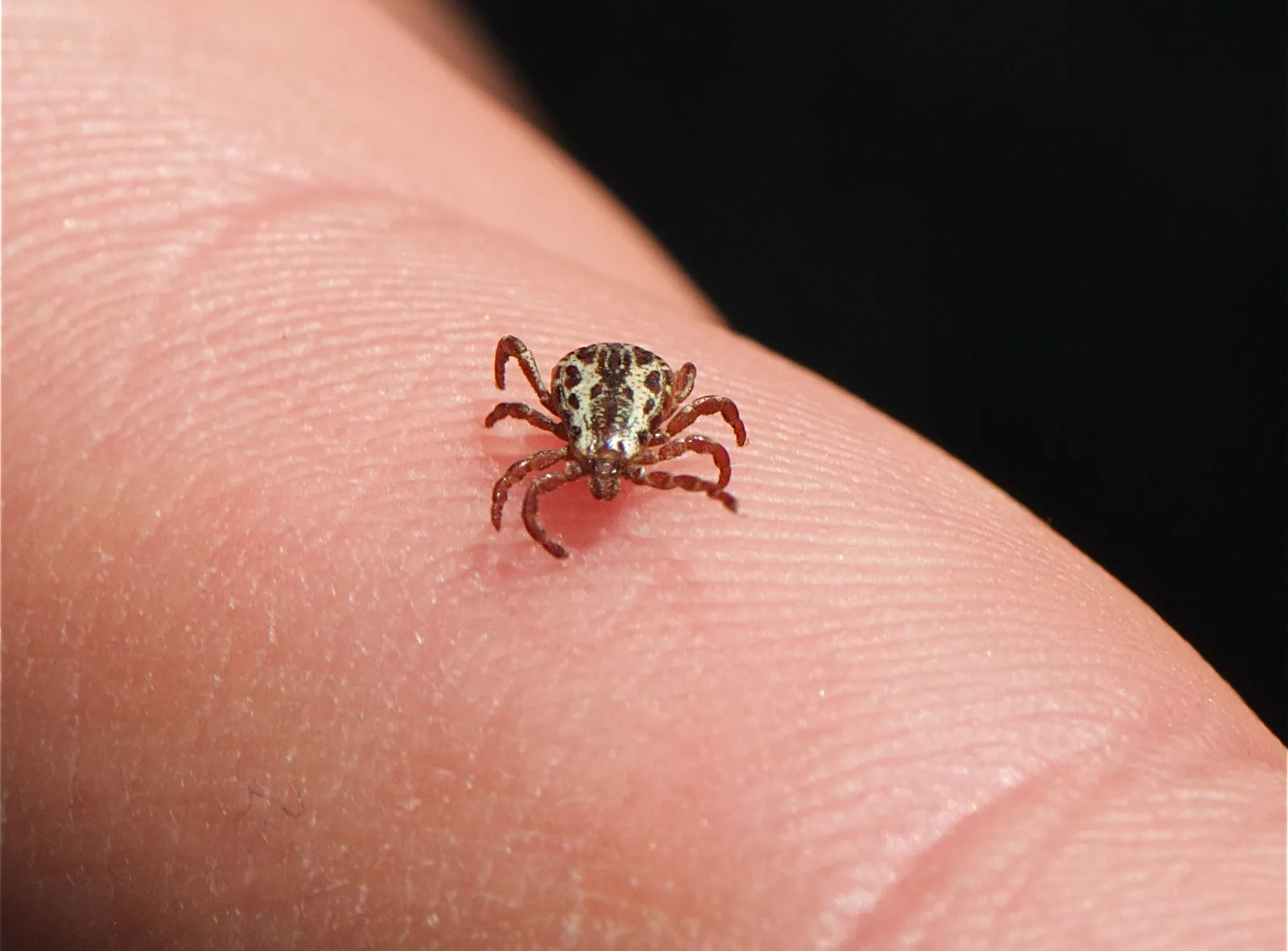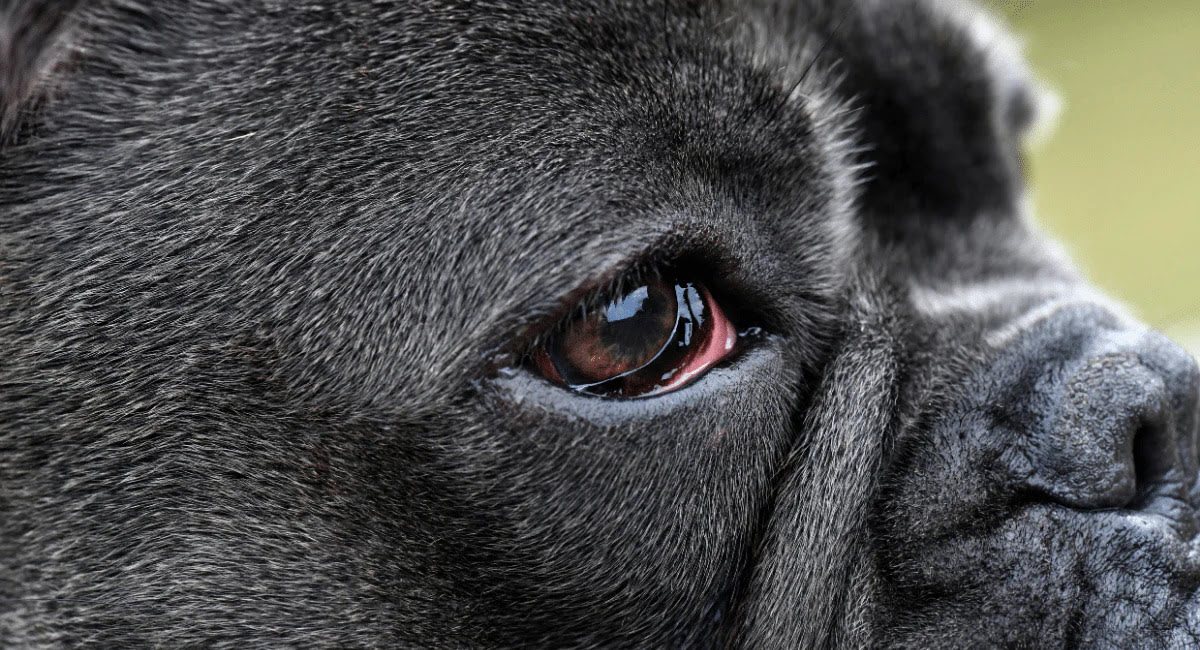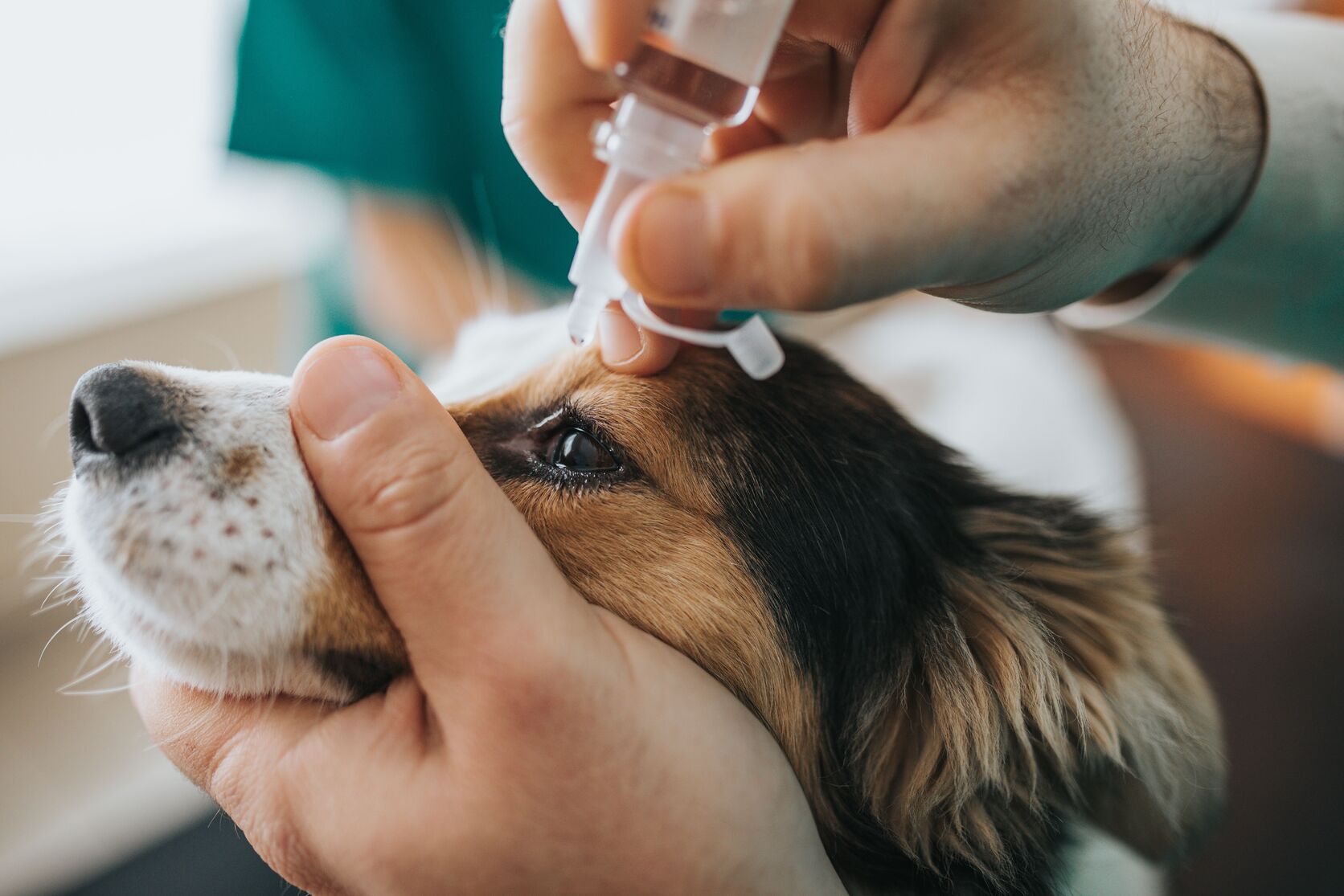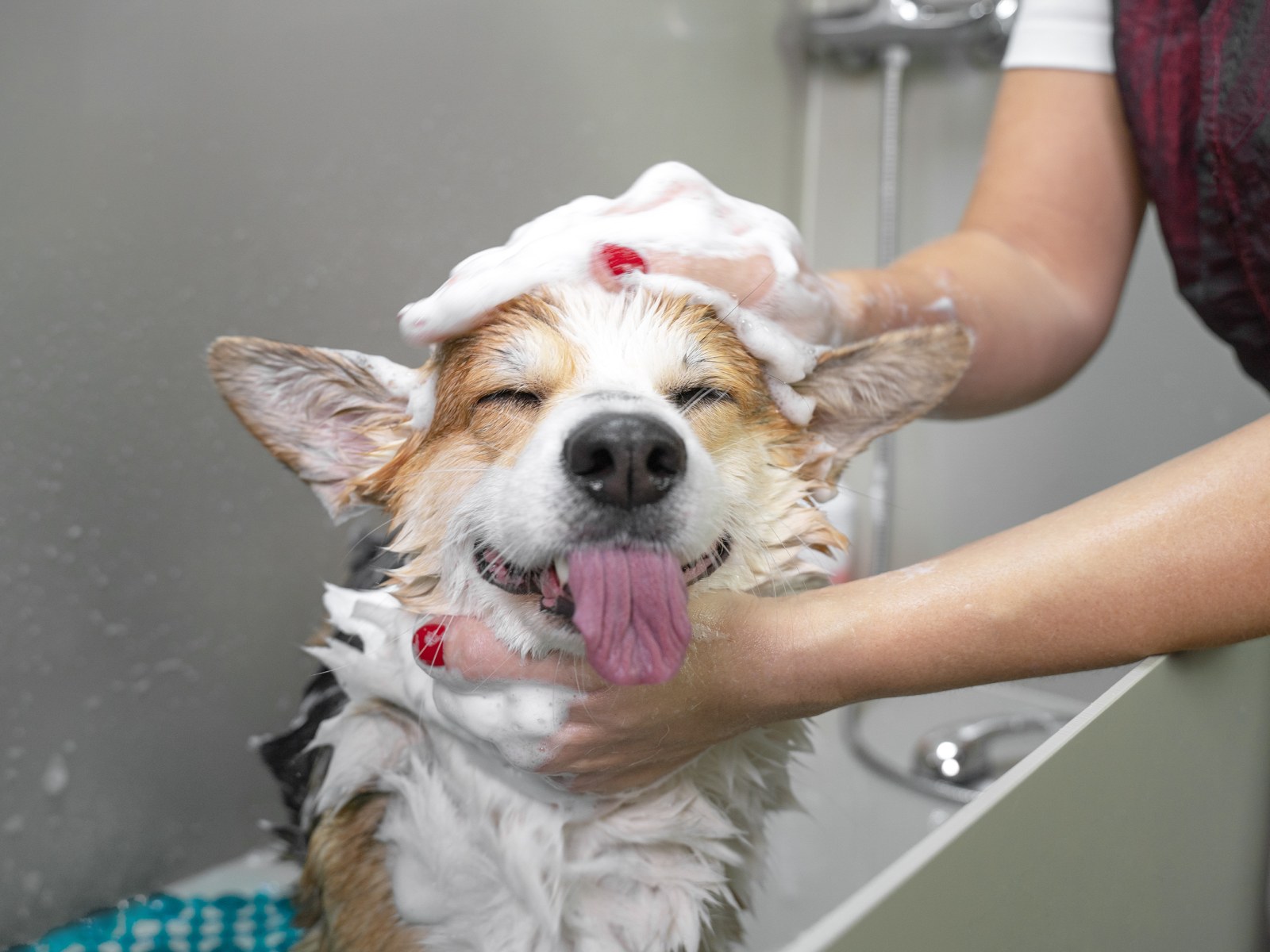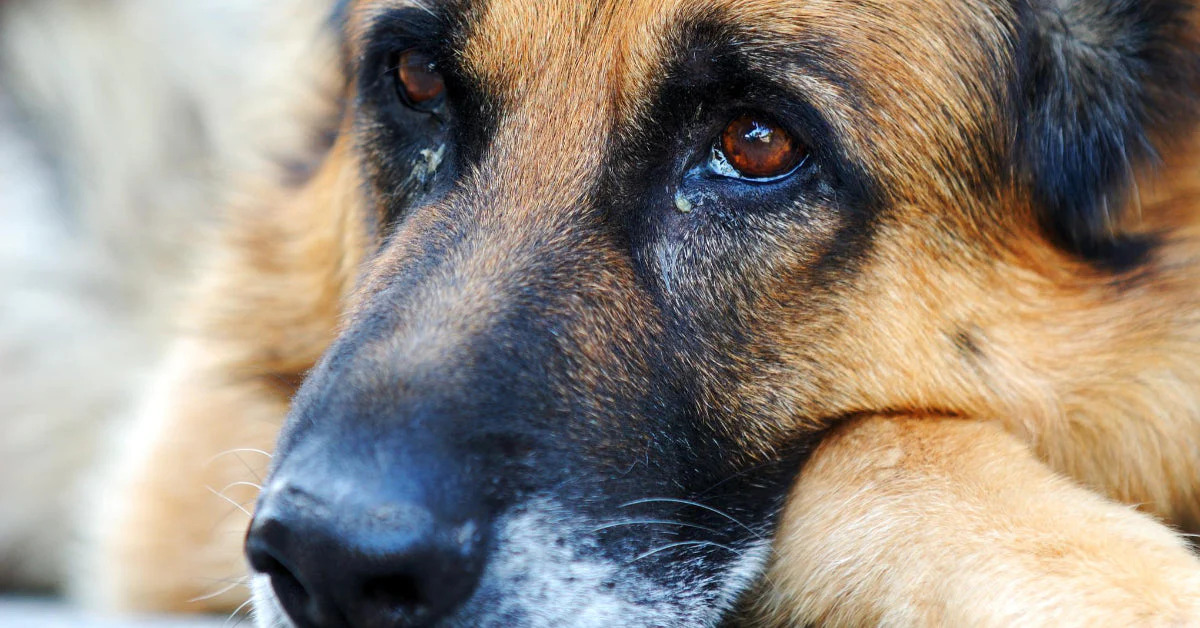Home>Health & Wellness>Common Health Issues>Eye and Ear Health>What Is Sunken Eye Disease In Dogs?


Eye and Ear Health
What Is Sunken Eye Disease In Dogs?
Published: February 12, 2024
Learn about sunken eye disease in dogs and how it affects their eye and ear health. Understand the symptoms, causes, and treatment options for this condition.
(Many of the links in this article redirect to a specific reviewed product. Your purchase of these products through affiliate links helps to generate commission for Pawsomeoldies.com, at no extra cost. Learn more)
Table of Contents
Introduction
Sunken eye disease, also known as enophthalmos, is a condition that can affect dogs, leading to a noticeable inward displacement of the eyeball within the eye socket. This condition can be concerning for pet owners, as it may indicate an underlying health issue that requires attention. Understanding the causes, symptoms, diagnosis, and treatment of sunken eye disease in dogs is crucial for ensuring the well-being of our furry companions.
Enophthalmos can be a result of various factors, including trauma, infection, inflammation, or underlying systemic diseases. It is essential for dog owners to be aware of the potential causes and symptoms of this condition to promptly seek veterinary care when necessary. By gaining insight into the preventive measures and treatment options available, pet owners can take proactive steps to support their dog's ocular health and overall well-being.
In the following sections, we will delve into the causes, symptoms, diagnosis, treatment, and preventive measures related to sunken eye disease in dogs. Understanding these aspects will empower pet owners to recognize potential signs of enophthalmos and take appropriate action to ensure the optimal eye and ear health of their beloved canine companions.
Read more: What Diseases Do Dogs Get From Ticks
Causes of Sunken Eye Disease in Dogs
Sunken eye disease in dogs, or enophthalmos, can stem from various underlying causes, each of which can impact the eye's position within the socket. Understanding these potential triggers is crucial for pet owners to recognize the factors contributing to this condition. Here are the primary causes of sunken eye disease in dogs:
-
Trauma: Physical injury to the eye or the surrounding area can lead to enophthalmos in dogs. Blunt force trauma, such as a direct blow to the head or eye, can result in the displacement of the eyeball within the socket, causing it to appear sunken.
-
Infection: Ocular infections, particularly those affecting the tissues around the eye, can lead to inflammation and subsequent enophthalmos. Infections caused by bacteria, viruses, or fungi can impact the eye's position and contribute to the development of sunken eye disease in dogs.
-
Orbital Disease: Conditions affecting the orbit, the bony cavity containing the eye, can result in enophthalmos. Tumors, cysts, or other abnormalities within the orbit can displace the eyeball, leading to a sunken appearance.
-
Dental Disease: Dental issues, such as abscesses or infections in the teeth or gums, can cause secondary changes in the surrounding structures, including the eye socket. These changes can contribute to the development of sunken eye disease in dogs.
-
Systemic Diseases: Underlying systemic conditions, such as dehydration, malnutrition, or metabolic disorders, can impact the overall health of a dog, potentially leading to enophthalmos. These systemic factors can affect the tissues surrounding the eye, resulting in a sunken appearance.
-
Genetic Predisposition: Certain dog breeds may have a genetic predisposition to conditions that can lead to enophthalmos. Structural abnormalities or inherited disorders affecting the eye and surrounding structures can contribute to the development of sunken eye disease.
Understanding these potential causes of sunken eye disease in dogs is essential for pet owners to recognize the signs and seek timely veterinary care. By identifying the underlying factors contributing to enophthalmos, pet owners can take proactive steps to address the condition and support their dog's ocular health.
Symptoms of Sunken Eye Disease in Dogs
Recognizing the symptoms of sunken eye disease in dogs is crucial for identifying potential signs of enophthalmos and seeking appropriate veterinary care. While the most apparent indication of this condition is the sunken appearance of the eye within the socket, several accompanying symptoms may manifest, signaling the presence of underlying issues affecting the eye and surrounding structures.
-
Sunken Appearance: The primary and most noticeable symptom of sunken eye disease in dogs is the inward displacement of the eyeball within the eye socket. This can create a visibly hollow or recessed appearance, indicating a potential issue that requires evaluation by a veterinarian.
-
Change in Eye Position: In addition to the sunken appearance, dogs with enophthalmos may exhibit a change in the position of the affected eye. It may appear to be positioned further back within the socket, deviating from its normal alignment.
-
Eye Discomfort: Dogs experiencing enophthalmos may display signs of eye discomfort or pain. This can manifest as increased blinking, squinting, or pawing at the affected eye, indicating potential discomfort or irritation.
-
Ocular Discharge: The presence of abnormal discharge from the affected eye, such as excessive tearing, mucus, or pus, can be indicative of underlying ocular issues contributing to the sunken appearance.
-
Changes in Behavior: Dogs with sunken eye disease may exhibit changes in behavior, such as reluctance to engage in activities that involve visual focus, or displaying signs of discomfort when exposed to bright light.
-
Secondary Symptoms: Depending on the underlying cause of enophthalmos, dogs may also present with additional symptoms related to the primary condition contributing to the sunken eye appearance. These can include signs of infection, inflammation, or systemic illness.
Recognizing these symptoms is essential for pet owners to promptly seek veterinary evaluation and care. Early detection and intervention can help address the underlying causes of sunken eye disease in dogs, ensuring the optimal ocular health and overall well-being of their canine companions.
Diagnosis and Treatment of Sunken Eye Disease in Dogs
Diagnosing sunken eye disease in dogs involves a comprehensive evaluation by a veterinarian to identify the underlying cause of enophthalmos and formulate an appropriate treatment plan. The diagnostic process typically includes a thorough physical examination, ocular assessment, and may involve additional diagnostic tests to pinpoint the contributing factors. Here's a detailed overview of the diagnosis and treatment of sunken eye disease in dogs:
Diagnosis
-
Physical Examination: The initial step in diagnosing sunken eye disease involves a comprehensive physical examination of the dog. The veterinarian will assess the eye's position, symmetry, and any accompanying symptoms, such as discomfort or abnormal discharge.
-
Ocular Assessment: A detailed examination of the affected eye, including visual inspection, measurement of the degree of enophthalmos, and assessment of ocular function, is crucial for understanding the extent of the condition and its impact on the dog's vision.
-
Diagnostic Tests: Depending on the suspected underlying cause, additional diagnostic tests may be recommended. These can include ocular imaging, such as ultrasound or computed tomography (CT) scans, to visualize the internal structures of the eye and surrounding tissues. Blood tests, cultures, or biopsies may also be conducted to identify systemic or infectious factors contributing to enophthalmos.
Read more: What Is Dental Disease In Dogs?
Treatment
-
Addressing Underlying Causes: The treatment approach for sunken eye disease in dogs focuses on addressing the underlying factors contributing to enophthalmos. This may involve targeted treatment for infections, inflammation, or systemic conditions impacting the eye and surrounding structures.
-
Medication: Depending on the diagnosis, the veterinarian may prescribe medications such as antibiotics, anti-inflammatory drugs, or pain management medications to alleviate discomfort, reduce inflammation, and combat underlying infections.
-
Surgical Intervention: In cases where trauma, orbital disease, or structural abnormalities contribute to enophthalmos, surgical intervention may be necessary. This can involve procedures to address fractures, remove tumors, or correct anatomical defects affecting the eye's position.
-
Ongoing Monitoring and Care: Following the initial treatment, ongoing monitoring and follow-up care are essential to assess the dog's response to treatment, monitor ocular health, and address any potential complications or recurrence of enophthalmos.
By accurately diagnosing the underlying causes and implementing targeted treatment strategies, veterinarians can effectively address sunken eye disease in dogs, alleviating discomfort, preserving ocular function, and promoting the overall well-being of canine patients.
Prevention of Sunken Eye Disease in Dogs
Preventing sunken eye disease in dogs involves proactive measures aimed at maintaining ocular health and minimizing the risk of conditions that can contribute to enophthalmos. By prioritizing preventive strategies, pet owners can play a pivotal role in safeguarding their canine companions from potential factors that may lead to sunken eye disease. Here are essential preventive measures to consider:
-
Regular Veterinary Care: Scheduling routine veterinary examinations for dogs is crucial for monitoring overall health, including ocular wellness. Veterinarians can conduct comprehensive eye assessments, identify early signs of potential issues, and provide guidance on maintaining optimal eye health.
-
Ocular Hygiene: Practicing good ocular hygiene can help prevent infections and inflammation that may contribute to sunken eye disease. Gently wiping the area around the eyes with a clean, damp cloth can help remove debris and reduce the risk of ocular irritation.
-
Dental Health Maintenance: Maintaining good dental hygiene in dogs is essential, as dental disease can impact the surrounding structures, including the eye socket. Regular brushing, dental check-ups, and professional cleanings can help prevent dental issues that may indirectly affect ocular health.
-
Nutritional Support: Providing a balanced and nutritious diet is vital for supporting overall canine health, including ocular function. Diets rich in essential nutrients, such as vitamins A and E, as well as omega-3 fatty acids, can promote ocular health and reduce the risk of conditions that may lead to enophthalmos.
-
Environmental Safety: Creating a safe and hazard-free environment for dogs can help prevent traumatic injuries that may impact ocular health. Removing potential hazards, securing sharp objects, and minimizing exposure to situations that may lead to physical trauma can reduce the risk of eye injuries.
-
Genetic Screening: For dog breeds with known genetic predispositions to ocular conditions, genetic screening and evaluation can aid in identifying potential risks early on. This proactive approach allows for informed breeding practices and early intervention to mitigate genetic factors contributing to sunken eye disease.
-
Regular Exercise and Mental Stimulation: Engaging dogs in regular physical activity and mental stimulation can contribute to overall well-being, including ocular health. Physical exercise and mental enrichment can support systemic health, reducing the risk of conditions that may impact the eyes and surrounding structures.
By integrating these preventive measures into the care regimen for dogs, pet owners can take proactive steps to minimize the risk of sunken eye disease and support the long-term ocular health of their beloved canine companions. Prioritizing preventive strategies, in conjunction with regular veterinary oversight, can significantly contribute to maintaining optimal eye health and overall well-being in dogs.
Conclusion
In conclusion, sunken eye disease, or enophthalmos, can pose significant concerns for the ocular health of dogs. Understanding the causes, symptoms, diagnosis, treatment, and preventive measures associated with this condition is essential for pet owners to ensure the well-being of their canine companions. By recognizing the potential triggers of enophthalmos, such as trauma, infection, orbital disease, dental issues, systemic diseases, and genetic predispositions, pet owners can remain vigilant and seek timely veterinary care when necessary.
The symptoms of sunken eye disease, including the sunken appearance of the eye, changes in eye position, ocular discomfort, abnormal discharge, and behavioral changes, serve as crucial indicators for pet owners to promptly seek professional evaluation and intervention. Through a comprehensive diagnostic process, veterinarians can pinpoint the underlying causes of enophthalmos and formulate targeted treatment plans tailored to address the specific factors contributing to the condition.
Preventive measures play a pivotal role in safeguarding dogs from the potential risk factors associated with sunken eye disease. Regular veterinary care, ocular hygiene practices, dental health maintenance, nutritional support, environmental safety precautions, genetic screening, and promoting physical and mental well-being contribute to proactive ocular health management in dogs.
By prioritizing preventive strategies and promptly addressing potential signs of enophthalmos, pet owners can support the ocular health and overall well-being of their beloved canine companions. Through collaborative efforts between pet owners and veterinary professionals, the impact of sunken eye disease can be mitigated, ensuring that dogs receive the necessary care and support to maintain optimal ocular function and lead healthy, fulfilling lives.
In essence, by fostering awareness, proactive care, and a deep understanding of sunken eye disease, pet owners can play a pivotal role in preserving the ocular health and quality of life of their cherished canine companions.
